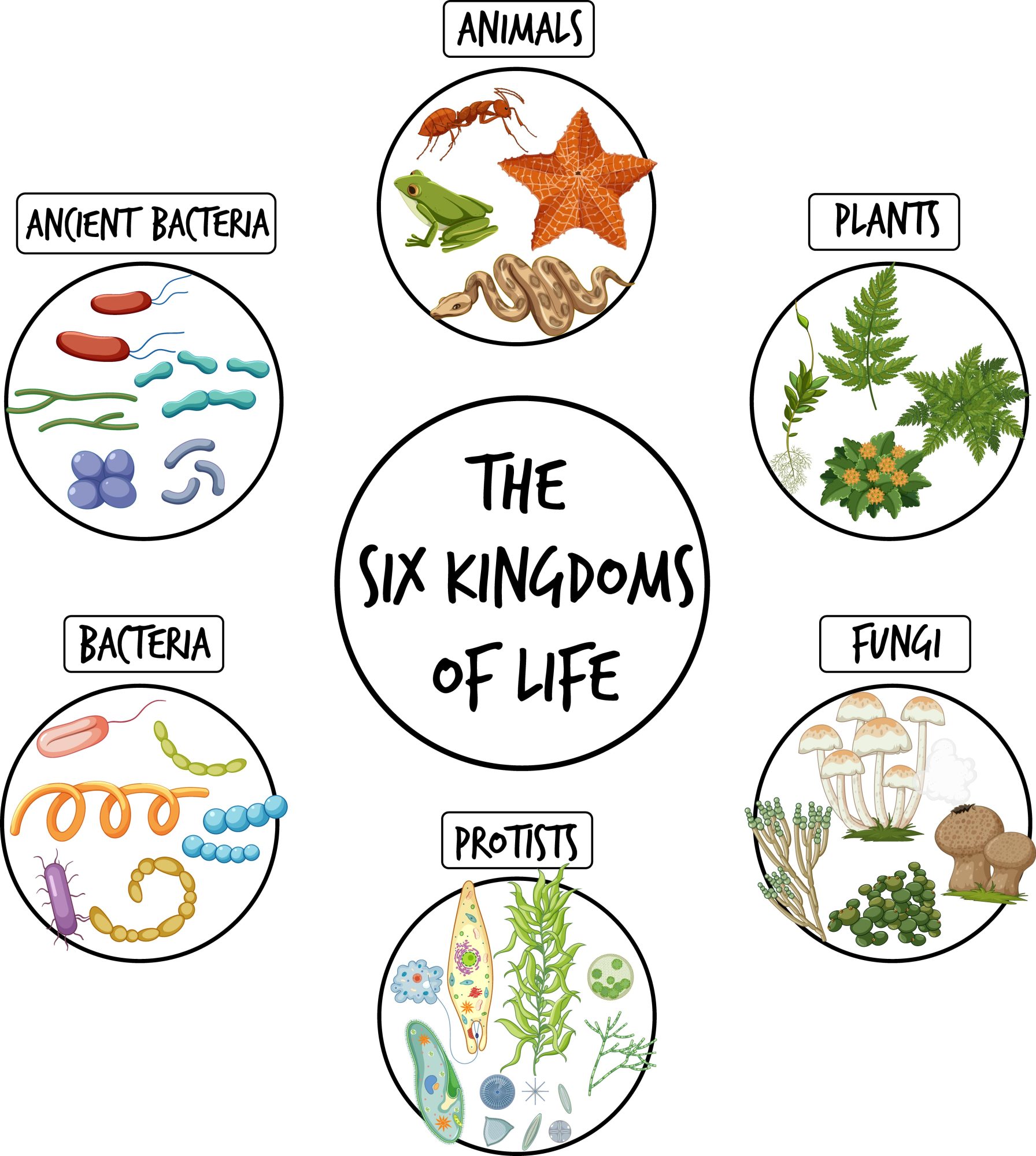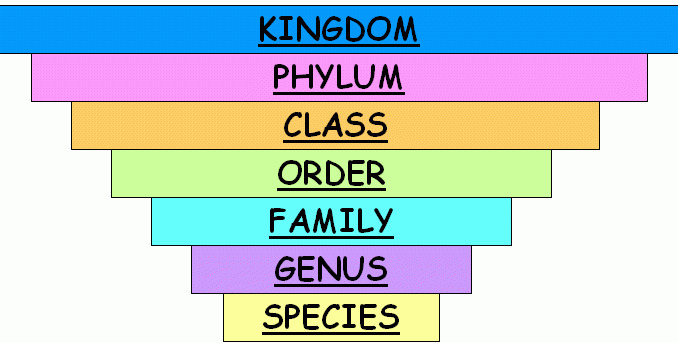“To study life is to understand its diversity. To understand diversity is to appreciate classification.”
Table of Contents
Toggle
Welcome to today’s lesson on the 6 Kingdom Classification—a central concept in biological taxonomy that helps us understand how all living organisms on Earth are organized based on similarities and differences.
In this modern era of science education, clarity, curiosity, and connection are crucial. So let’s dive deep into this fascinating topic and learn how scientists classify all living beings into six major kingdoms, how this system evolved, and why it matters in today’s biology curriculum.
Why Classify Living Organisms?
Imagine entering a library with millions of books but no shelves or categories. Finding what you want would be impossible, right?
Similarly, Earth is home to millions of organisms, and scientists needed a system to:
-
Organize biological diversity
-
Understand evolutionary relationships
-
Predict shared characteristics
-
Enable global communication across scientific communities
This necessity led to the development of biological classification systems or taxonomy.
Evolution of Classification Systems
Let’s travel briefly through time:
-
Aristotle (384–322 BCE): Divided life into plants and animals
-
Carl Linnaeus (1707–1778): Introduced the binomial nomenclature and a 2-kingdom system: Plantae & Animalia
-
1969 – Robert Whittaker: Proposed the 5-Kingdom system (Monera, Protista, Fungi, Plantae, Animalia)
-
Modern Classification (6-Kingdom): Advances in genetics, biochemistry, and electron microscopy led to the 6-Kingdom model used today
The 6 Kingdom Classification Overview
The six kingdoms are grouped under three domains based on cellular structure and genetics:
| Domain | Kingdoms |
|---|---|
| Bacteria | Eubacteria |
| Archaea | Archaebacteria |
| Eukarya | Protista, Fungi, Plantae, Animalia |
Let’s break down each kingdom with details, characteristics, and examples.
1. Eubacteria (True Bacteria)
Domain: Bacteria
Cell Type: Prokaryotic
Cell Wall: Contains peptidoglycan
Nutrition: Autotrophic or heterotrophic
Reproduction: Asexual (binary fission)
Habitat: Found everywhere – soil, water, human body
Key Features:
-
No nucleus or membrane-bound organelles
-
Includes both harmful and beneficial bacteria
-
Plays a major role in decomposition, nitrogen fixation, and digestion
Examples:
-
Escherichia coli (E. coli)
-
Streptococcus pneumoniae
-
Lactobacillus acidophilus
Fun Fact: Your body has more bacterial cells than human cells!
2. Archaebacteria (Ancient Bacteria)
Domain: Archaea
Cell Type: Prokaryotic
Cell Wall: No peptidoglycan; unique lipids
Nutrition: Mostly autotrophs; some heterotrophs
Reproduction: Asexual
Habitat: Extreme environments (hot springs, salt lakes, deep ocean vents)
Key Features:
-
Genetically closer to eukaryotes than bacteria
-
Known as extremophiles
-
Thrive in anaerobic conditions
Examples:
-
Halobacterium (salt-loving)
-
Thermoplasma (heat-loving)
-
Methanogens (produce methane)
Did You Know? Archaebacteria are believed to be some of the oldest life forms on Earth, dating back over 3.5 billion years!
3. Protista (The Misfits Kingdom)
Domain: Eukarya
Cell Type: Eukaryotic
Cell Wall: Present in some
Nutrition: Autotrophic or heterotrophic
Reproduction: Asexual or sexual
Habitat: Aquatic, moist environments
Key Features:
-
The most diverse group
-
Often called the “junk drawer” of classification
-
Can be unicellular, colonial, or multicellular
Subgroups:
-
Protozoa (animal-like): Amoeba, Paramecium
-
Algae (plant-like): Chlamydomonas, Euglena
-
Slime molds (fungus-like): Physarum
Fun Insight: Protists are the ancestors of fungi, plants, and animals.
4. Fungi (The Decomposers)
Domain: Eukarya
Cell Type: Eukaryotic
Cell Wall: Made of chitin
Nutrition: Heterotrophic (absorption)
Reproduction: Asexual or sexual (spores)
Habitat: Terrestrial, moist environments
Key Features:
-
Non-photosynthetic organisms
-
Play key roles in decomposition and recycling
-
Can be unicellular (yeast) or multicellular (mushrooms)
Examples:
-
Saccharomyces cerevisiae (baker’s yeast)
-
Penicillium (source of antibiotic)
-
Agaricus bisporus (common mushroom)
Did You Know? Fungi helped humans discover penicillin, revolutionizing medicine.
5. Plantae (The Producers)
Domain: Eukarya
Cell Type: Eukaryotic
Cell Wall: Made of cellulose
Nutrition: Autotrophic (photosynthesis)
Reproduction: Asexual or sexual
Habitat: Terrestrial and aquatic ecosystems
Key Features:
-
Perform photosynthesis using chlorophyll
-
Multicellular and complex
-
Vital for the oxygen-carbon dioxide cycle
Examples:
-
Mosses, ferns, flowering plants, conifers
Eco Note: Without plants, life on Earth would collapse—no oxygen, no food chain!
6. Animalia (The Consumers)
Domain: Eukarya
Cell Type: Eukaryotic
Cell Wall: Absent
Nutrition: Heterotrophic (ingestion)
Reproduction: Mostly sexual
Habitat: All environments
Key Features:
-
Highly complex body systems
-
Capable of movement and response to stimuli
-
Depend on plants and other organisms for energy
Examples:
-
Insects, fish, reptiles, birds, mammals—including humans!
Human Note: As members of Kingdom Animalia, we are part of the grand web of life—and our actions affect all other kingdoms.
Importance of the 6 Kingdom Classification
-
Helps identify evolutionary lineages
-
Enhances clarity in scientific communication
-
Aids in biomedical research, genetics, and ecology
-
Encourages conservation efforts by understanding biodiversity
Summary: Nature’s Organizational Genius
The 6 Kingdom Classification system is not just a chart—it’s a story of evolution, adaptation, and interdependence. It reflects how science organizes complexity, making it understandable and teachable.
“In diversity, we find unity; in classification, we find clarity.”
Whether you’re a high school student preparing for biology exams, a college learner studying taxonomy, or a lifelong learner exploring the natural world—this system is your guide to understanding life’s rich tapestry.






